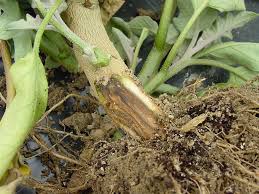The Different Crop Storage Methods
There are basically two methods of crop storage: in bags and in bulk. Bags can be stored either in the open air or in warehouses; while bulk grain is stored in bins or silos of various capacities.
a) Drying Cribs
Drying crib can be used for a storage barn but it is too dangerous to leave the grain exposed to insects, birds, and other pests in order to avoid that, when the grain is dry it should be moved to a better storage place.
b) Bag Storage
Bag storage is a very popular form of storage because bags are easy to handle and the jute bag allows you to store different grains in the same room. When storing your agricultural products in bags, make sure you note the following:
– Make sure the storage room is clean and free of all insects. Meanwhile Holes should also be repaired.
– Wash all old bags, shook out, and placed in the sun to dry to drive away any insects still in the sack.
– Check the bags regularly for any problems.
Make sure that the sacks never rest directly on the ground or against walls.
Read Also: The 4 Constraints to Crop Production in Africa
c) Bamboo Boxes
Bamboo boxes are usually constructed with bamboo sticks and bamboo rope. The floor of the box is always raised off the ground in order to prevent water to rise up from the ground to enter the box.
The bottom of the walls is often packed with mud soil to prevent rats and the box roofed with zinc or is placed under the leaves of the house to ensure the rain off the box.
d) Drums (Air Tight Storage)
Drums are another good storage material, ensure that the drums are well cleaned, don’t have holes and is sealed properly. Place only dried grains in the drums and the drum must be kept in a cool place.
f) Others
Baskets, tins, and empty calabashes can also be used to store grain. Just ensure that the grains and the containers are clean and free of insects. Keep the container in a clean, cool, dry place. Baskets, tins’ end calabashes are small and are ideal for seed storage.
Metals drums must be put out of the sun. Good storage places are cool, dry, and dark.
Related: The Complete List of Indigenous Crops of Africa
Long-term Storage Methods
(i) Storage baskets (cribs) made exclusively of plant materials
In humid countries, where grain cannot be dried adequately prior to storage and needs to be kept well ventilated during the storage period, traditional granaries (cribs) are usually constructed entirely out of locally available plant materials: timber, reeds, bamboo, etc. (Figure 6.4.).
Under prevailing climatic conditions most plant material rot fairly quickly, and most cribs have to be replaced every two or three years – although bamboo structures may last up to 15 years, with careful maintenance.
Basically similar to the outdoor type of platform described above, in all its variations, the traditional crib differs in always having a roof and wall(s). It may even be elevated at least one metre above ground level, with a fire maintained underneath to assist drying of the contents and, allegedly, to reduce insect infestation. However, such cribs (especially the larger ones) are more commonly raised only 40 to 50 cm above ground level.
Access to the interior of a crib is gained usually over the wall. This may involve raising the roof, but some cribs have a gap between the top of the wall and the roof to facilitate entry. Relatively few cribs have sealable gaps in the wall or floor for the removal of grain.
(ii) Calabashes, gourds, earthenware pots
These small capacity containers are most commonly used for storing seed and pulse grains, such as cowpeas. Having a small opening, they can be made hermetic, by sealing the walls inside and out with liquid clay and closing the mouth with stiff clay, cow dung, or a wooden (cork?) bung reinforced with cloth.
If the grain is dry (less than 12% moisture content) there there is usually no problem with this kind of storage.
(iii) Jars
These are large clay receptacles whose shape and capacity vary from place to place. The upper part is narrow and is closed with a flat stone or a clay lid: which is sealed in position with clay or other suitable material.
Generally kept in dwellings, they serve equally for storing seeds and legumes. So that they may remain in good serviceable condition, they should not be exposed to the sun and should not be either porous or cracked.
Read Also: Cross Breeding and Artificial Insemination in Livestock Breeding
(iv) Solid wall bins
Such grain stores are usually associated with dry climatic conditions, under which it is possible to reduce the moisture content of the harvested grain to a satisfactory level simply by sun-drying it. Solid wall bins are therefore traditional in the Sahel region of Africa, and in southern African countries bordering on the Kalahari desert.
The base of a solid wall bin may be made of timber (an increasingly scarce resource), earth or stone. Earth is not recommended because it permits termites and rodents to enter. The better base is made of stone.
Mud or clay silos are usually round or cylindrical in shape, depending on the materials used (Figure 6.5). Rectangular-shaped bins of this type are less common, because the uneven pressure of the grain inside causes cracking – especially at the corners.
Clay, which is the basic material, varies in composition from one place to another. That most commonly used for such construction work is obtained from termitaries, because the termites add a secretion which gives it better plasticity.
To give it added strength, certain straw materials such as rice straw may be mixed with it; while, in some countries, néré juice is added to make it almost as durable as concrete. The diversity of materials used explains why the capacities of such silos can vary from 150 kg to 10 tonnes.
In West Africa, when only clay is used, the walls are 15 to 20 cm thick: the shape is then more or less cylindrical and the construction is similar to the walls of a house.
However, when the clay is strengthened as described above, the bin is usually rounder in shape and resembles a jar; with walls only 2.5 to 5 cm thick, but very strong, so that it is possible to climb on top to enter the silo for regular withdrawal of grain.
The interior is often compartment by vertical internal walls, joining at the centre on a central column which serves to support the foot when one enters the silo.
The walls are rendered as smooth as possible, inside and out in such a way as not to offer refuge for insects and their larvae; fissures are sealed with liquid clay before each loading. Similarly, the angles formed by the internal partition walls and external wall are rounded for the same reasons.
In southern Africa, where the bins are commonly rectangular in plan, internal compartments are usually covered with mud-plastered timber ceilings and are accessed via sealable ‘windows’. These face a short corridor leading to the exit, which may be fitted with a standard lockable door.
The roof is usually made of thatched grass, with a generous overhang to protect the mud wall(s) from erosion. Where a side door or a detachable ‘cap’ is not provided, the roof has to be lifted for access to the bin. Such silos can serve for 30 or even 50 years.
(v) Underground Crop Storage
Practised in India, Turkey, sahelian countries and southern Africa, this method of storage is used in dry regions where the water table does not endanger the contents. Conceived for long term storage, pits vary in capacity (from a few hundred kilogrammes to 200 tonnes).
Their traditional form varies from region to region: they are usually cylindrical, spherical or amphoric in shape, but other types are known (Gilman and Boxall, 1974). The entrance to the pit may be closed either by heaping earth or sand onto a timber cover, or by a stone sealed with mud.
The advantages of this method of storage are:
- Few problems with rodents and insects;
- Low cost of construction compared to that of above-ground storage of similar capacity;
- Ambient temperatures are relatively low and constant;
- Hardly visible, and therefore relatively safe from thieves;
- No need for continuous inspection.
The disadvantages are:
- Construction and digging are laborious;
- Storage conditions adversely affect viability; the stored grains can only be used for consumption;
- The grain can acquire a fermented smell after long storage;
- Removal of the grain is laborious and can be dangerous because of the accumulation of carbon dioxide in the pit, if it is not completely full;
- Inspection of the grain is difficult;
- Risks of penetration by water are not small, and the grain at the top and in contact with the walls is often mouldy, even if the rest of the stock is healthy.
Related: Comprehensive Guide on How to start Cockerel Farming Business








